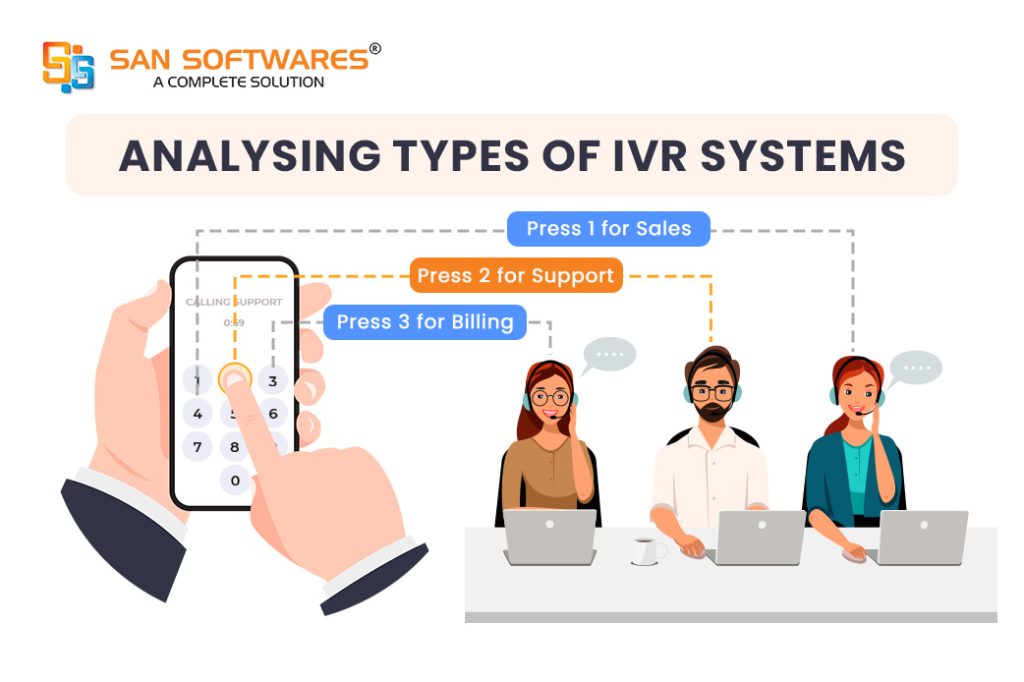Discover How AI is Revolutionizing Journey & CX in Sales & Support
Limited Seats!

IVR systems define today’s efficient and most appreciated methods for companies and organizations to provide an automated way to manage client relations. Regardless of whether the call is as simple as giving an address or as elaborate as booking a flight, IVR systems act as technology assistants to the customers. Understanding the types of IVRs and their uses is crucial for businesses to choose the right IVR solution. When different IVR systems and their applications are fully understood, companies will be in an excellent position to select the right IVR solution, especially with the growing conversational IVR market and the role of AI in enhancing customer experience.
An IVR system comprises various software and hardware tools that enable a person to interact with a telephone system. These technologies employ the help of pre-recorded voice prompts, voice recognition, and DTMF tones to navigate different menu levels and perform customer orders. The system’s backbone is IVR software, where call flow, links to back-end systems like CRM (Customer Relation Management), and interactions are managed. Understanding IVR systems’ integration into businesses is key to selecting the appropriate system.
These simple systems allow interaction between the caller and the system using pre-recorded messages and DTMF tones (keypad inputs). The user presses numbers to select options from a menu. IVR input types in basic systems are restricted to keypad responses, making them ideal for routine inquiries that do not require complex interaction. This type is very economical and easy to implement, making it suitable for IVR solutions for small businesses handling basic queries.
Example: A customer dials a bank’s customer service line to check their account balance or transfer funds through the IVR system.
Speech-enabled systems go beyond keypad interaction by incorporating voice recognition, enabling users to interact with the system using spoken language. These systems significantly enhance the user experience by eliminating the need for strict menu navigation. Speech recognition IVR input types allow for more dynamic interactions, making them useful for businesses with more complex customer service requirements.
Example: A customer calls an airline to inquire about flight status and simply says, “How is flight 123 doing?” The system provides the relevant information without the need for submenus.
While traditional systems respond to incoming calls, outbound IVR systems initiate calls to deliver automated messages. This type is often used for reminders, surveys, and marketing. Businesses can reach a broad audience quickly with AI IVR systems that personalize messages and gather feedback effectively.
Example: A healthcare provider uses outbound IVR to remind patients of upcoming appointments or to conduct post-visit surveys.
A more advanced IVR system, conversational IVR software, integrates artificial intelligence (AI) to handle complex conversations using natural language processing. This system understands spoken commands and processes complex inquiries, making the interaction more intuitive and human-like. Conversational IVR systems are becoming popular due to their ability to address multifaceted customer needs without the intervention of human agents. The conversational IVR market is growing as businesses seek more intelligent solutions that streamline customer service.
Example: A telecommunications company employs conversational IVR software to troubleshoot technical issues, allowing customers to explain their problems naturally and offering appropriate solutions or escalation.
Utilities: For reporting outages, reading meters, and making billing inquiries.
Choosing the right IVR system for business requires a clear understanding of the type of customer interactions needed and the complexity of those interactions. Conducting an IVR analysis helps companies to assess their requirements and match them to the right system. Basic IVR systems are best for routine tasks, while speech-enabled and conversational IVR systems enhance the user experience by allowing more natural interactions. Outbound IVR systems are particularly useful for proactive customer outreach and engagement. Understanding the scope and features of these systems through thorough IVR analysis will enable businesses to make informed decisions.
IVR systems continue to evolve and offer businesses powerful tools to automate and improve customer service. Whether through basic IVR systems, speech-enabled IVR, outbound IVR, or conversational IVR software, these technologies can help streamline operations, reduce costs, and enhance customer satisfaction. By understanding the different types of IVR and their specific applications and performing an IVR analysis, businesses can leverage these systems effectively to stay competitive in today’s digital landscape.

SAN Softwares is a company dedicated to providing complete software solutions to Corporate and end-user customers.
